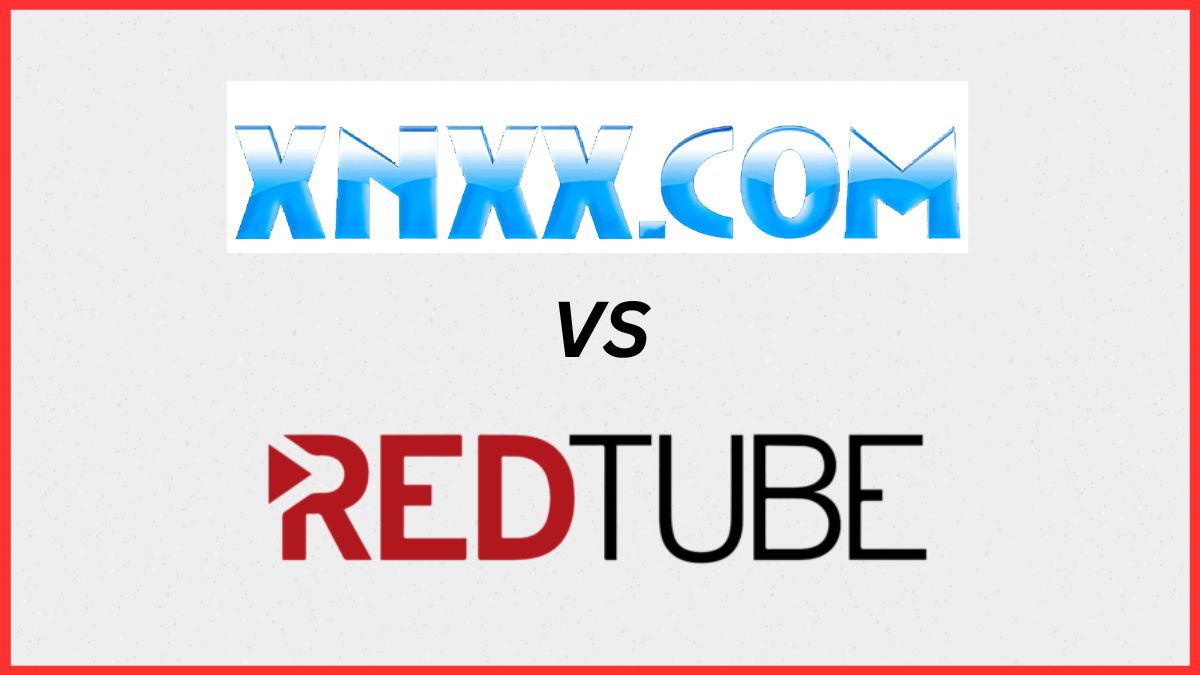 Image Credit: Logos-world
Image Credit: Logos-world
Advertisement
XNXX and RedTube, both platforms, are accessible globally, but their reach and usability vary depending on the region. Certain countries restrict one another due to local censorship laws, giving users in places like India and the UAE varying access via VPNs. Site loading speed significantly differs: one consistently loads within 2.3 seconds on average in the U.S., while the other can take over 4 seconds during high-traffic periods, particularly in European markets.
Mobile responsiveness is crucial in 2025, with over 72% of adult content consumption now occurring on smartphones. One platform offers a streamlined mobile interface with intuitive touch navigation and full-screen mode that adjusts instantly. The other lags slightly, with occasional misalignments and a heavier homepage design that can slow down load times on older devices.
XNXX and RedTube: Mobile Adaptability and International Availability
Despite both claiming to be globally accessible, one platform performs better in rural broadband conditions, maintaining functionality even at 3G speeds. Regional CDN optimization has allowed quicker buffering and reduced latency. Meanwhile, the competitor struggles in high-density urban centers like São Paulo and Jakarta, where server congestion often delays initial page loads.
Language localization also differs. One supports 32 interface languages with full captioning in top trending videos, while the other only partially translates user comments and categories, leaving non-English viewers with a fragmented experience. For multilingual viewers, this distinction dramatically affects navigation and overall comfort.
Redtube vs XNXX: Ad Strategy, Interruptions, and Viewer Control
Advertising strategies on adult platforms vary drastically. One site displays an average of 3.8 ads per page view, with autoplay banners and pop-unders that persist even when the tab is closed. The other has implemented an aggressive but streamlined model, showing ads only before videos with a 5-second skip timer and static sidebar promotions that don’t interfere with playback.
Ad placement plays a major role in viewer frustration levels. On one site, full-page takeovers occur after every second video, breaking immersion and leading to bounce rates nearing 40%. On the other, ad content is contextually aligned with the viewer’s preferences, making it less intrusive and statistically less likely to result in site abandonment.
XNXX and RedTube: Interruptions and Skippability in Practice
Skippable ad functionality is a noticeable differentiator. One platform’s pre-rolls are universally skippable after a 6-second countdown, while the other locks certain ads until full playback, especially for new users. Internal tests show that this impacts average session length by nearly 22%, with more users staying longer when skip features are present.
Additionally, video interruptions due to in-content ads are non-existent on one site, while the other embeds mid-roll promotions into 11% of its high-traffic uploads. For viewers aiming for uninterrupted content flow, this can make or break platform loyalty.
Redtube vs XNXX: Premium Offerings, Paywalls, and Monetisation Options
While both platforms advertise themselves as free, premium tiers reveal a layered user experience. One offers a subscription model at $9.99/month that removes ads, unlocks full HD content, and allows video downloads. The other promotes a free-first approach but gradually gates popular videos behind a login wall with limited replays.
Features behind paywalls differ. Full-length content, higher streaming quality, and exclusive amateur content often require subscription access. One platform restricts 4K content entirely to premium users, while the other includes it as a free trial benefit, albeit with watermarks and limited availability.
XNXX and RedTube- Free vs Paid: What Really Matters to Viewers
Monetisation models influence both content quality and quantity. One platform incentivizes uploaders through ad-revenue sharing, encouraging a steady influx of new material, while the other uses direct payout schemes based on video engagement time. This results in more consistent uploader loyalty on the former but higher-quality control on the latter.
For users not wishing to pay, the experience remains viable, though limited. Download functions are locked behind subscription tiers for both, but one uniquely allows temporary cache storage for offline viewing—a standout feature for those on unreliable networks.
Redtube vs XNXX: Content Variety, Search Functionality, and Discovery Tools
From a content diversity standpoint, both platforms exceed 10,000 active categories in 2025. One leans heavily into algorithmic tagging, offering precision-based filtering including video duration, resolution, audio language, and user rating. The other still relies on uploader-assigned tags, leading to inconsistent search relevance.
Search tools play a defining role. One platform employs a semantic search engine that interprets intent-based queries, while the other depends on exact keyword matching. This makes the latter more frustrating when viewers seek nuanced content not easily categorized.
XNXX and RedTube: Filtering Tools and Niche Accessibility
A standout feature in one site is the AI-assisted recommendation tool, which dynamically reorders search results based on the user’s viewing history. The competitor’s static result structure lacks this customization, resulting in repetitive top videos that rarely change.
Niche content is better supported on the platform with community-curated tags and custom playlist features. With options to follow specific genres and creators, the experience becomes increasingly personal. Meanwhile, the other site’s category filters are cluttered and inconsistent, making rare content more difficult to locate.
Redtube vs XNXX: Uploader Monetisation, Creator Credit, and Copyright
Supporting creators in adult content remains complex. One platform offers verified uploader badges, direct tipping, and dashboard analytics, giving content creators control and motivation. The other operates with limited transparency, rarely promoting individual creators and lacking a robust verification mechanism.
Uploader recognition is central to community growth. Verified profiles receive homepage rotation and priority in search results. This empowers originality and discourages stolen content. In contrast, the absence of these mechanisms on the other platform contributes to high volumes of duplicated material.
XNXX and RedTube: Originality Protection and Revenue Sharing
One site’s copyright system employs fingerprinting technology to automatically detect and flag stolen uploads, protecting original creators. The rival lacks any such automation, leading to a reported 17% duplication rate in top video results as of Q1 2025.
Earnings are also more structured on the better-performing site. Uploaders receive 45% of ad revenue, calculated by views, engagement, and session time. This incentivizes sustained quality over volume, something the competitor struggles with due to an unstructured incentive model.
Redtube vs XNXX: Cookies, Tracking, and Viewer Privacy
Privacy policies remain one of the least discussed yet most impactful factors. Both platforms collect IP addresses, device identifiers, and viewing history, but the scope and opt-out options vary significantly. One offers a granular cookie control interface where viewers can opt out of marketing trackers. The other uses an all-or-nothing model requiring full acceptance before access.
Tracking types include session analytics, referral origins, and behavioral segmentation. One platform anonymizes data after 30 days, while the other stores identifiers for up to a year for “personalization purposes.” These practices have raised concern among cybersecurity analysts monitoring adult data security in 2025.
XNXX and RedTube: Policy Transparency and Data Collection Depth
One site’s privacy policy is clearly structured, specifying which cookies are essential and which are optional. The competitor offers a generalized document, lacking specifics about third-party partners or data retention limits.
An emerging trend is geo-tracking. One platform disables location-based targeting unless explicitly permitted, while the other enables it by default—affecting ad content and suggestions. This subtle difference could mean less exposure to geo-specific ads for cautious viewers.

Redtube vs XNXX: Traffic Rank, Global Reach, and Viewer Loyalty
Popularity metrics show a clear divide. One ranks in the global top 30 websites according to SimilarWeb (April 2025 data), with an average visit duration of 11 minutes. The other fluctuates between ranks 70–90, with shorter average visits of about 7.5 minutes.
Regional engagement tells a more nuanced story. In Western Europe and Latin America, one platform holds a dominant share, with 64% of returning users within a week. The other performs better in Southeast Asia, particularly in Indonesia and Thailand, driven by localized content and faster mobile loading.
XNXX and RedTube: Viewer Retention and User Return Rates
Retention rates show interesting patterns. One site has a higher bounce rate but deeper per-session engagement, with users often consuming 4+ videos per visit. The other boasts a lower bounce rate due to rapid loading but suffers from quick exits after one or two views.
Referral traffic sources also differ. One relies heavily on organic search and bookmarks, indicating brand loyalty. The competitor is more reliant on external link traffic, which can fluctuate based on third-party site performance.
Redtube vs XNXX: User Interface, Video Player Features, and UX Design
UX design is often overlooked but plays a defining role. One platform’s homepage prioritizes thumbnails with hover previews, neatly grouped categories, and an unobtrusive dark mode toggle. The other still uses a cluttered layout with overly aggressive popups and inconsistent thumbnail sizes.
Video player design includes resolution toggles, captions, speed control, and auto-loop—all of which are now expected as standard. One platform supports all of these plus picture-in-picture functionality, while the other omits closed captions and requires login for certain player features.
XNXX and RedTube: Recommendation Engine and Navigation Fluidity
Recommendation engines are driven by viewing history, but implementation differs. One platform fine-tunes its homepage every 48 hours based on watched content, while the other updates monthly, leading to slower personalization.
Navigation also plays a role in user satisfaction. The site with a collapsible sidebar and persistent search bar ensures smoother discovery, while the other requires repeated backtracking and lacks breadcrumb trails—a minor detail with major navigational implications.
Redtube vs XNXX: Resolution, Buffering, and Technical Performance
High-resolution streaming is now the baseline. Both platforms offer 720p, 1080p, and 4K streams, but delivery mechanisms diverge. One uses adaptive bitrate streaming with buffer preloading, resulting in fewer interruptions. The other’s older server structure causes buffering delays during peak hours.
Hosting infrastructure also impacts reliability. One is backed by a robust global CDN with mirror servers, offering 99.9% uptime. The other has suffered multiple downtimes during maintenance updates, averaging 4.5 hours of unavailability per quarter in 2024.

Playback Smoothness and File Optimization
File optimization standards also differ. One platform compresses without quality degradation, maintaining fidelity while saving bandwidth. The other still shows pixelation during fast-motion scenes, particularly on mobile devices.
Bitrate regulation, a major factor in consistent playback, is dynamically managed on the better-performing site, whereas the competitor uses static delivery, leading to lag on fluctuating connections. This becomes especially noticeable on shared Wi-Fi or public networks.
Redtube vs XNXX: How These Platforms May Secretly Influence Your Search Behaviour and Preferences Over Time
One often overlooked aspect of adult streaming platform comparison is how subtle algorithmic cues can reshape viewer interest over time. Recommendation systems on both platforms don’t just reflect preferences—they also shape them by reinforcing specific patterns. For example, frequent exposure to one genre increases its likelihood of appearing again, even if the user merely hovered over it without clicking.
This behavioral reinforcement is amplified by auto-play sequences and sidebar suggestions. One platform even uses micro-interactions, such as video hover time, to calibrate future suggestions. Over time, this can shift a viewer’s consumption from vanilla content to more niche or extreme categories, regardless of original intent.
Feedback Loops and Algorithmic Influence
Because user data fuels the recommendation engine, a feedback loop is created. What you watch today affects what you’ll be shown tomorrow. One platform even bases its entire discovery system on engagement mapping, turning passive preferences into active suggestions.
This influence can subtly change personal taste trajectories over months. For some, this leads to the discovery of new interests. For others, it can create dependency cycles around specific categories. Awareness of these mechanisms is critical for viewers aiming to maintain agency over their digital desires.
Conclusion
The modern viewer’s relationship with adult platforms is no longer passive. Technical performance, privacy transparency, and nuanced recommendation systems deeply affect how users interact with content. In this evolving landscape, understanding the differences between these two leading sites isn’t just about preference—it’s about informed digital engagement.
(Business Upturn does not promote or advertise the respective company/entity through this article nor does Business Upturn guarantee the accuracy of information in this article)
